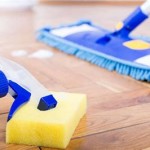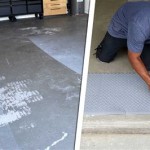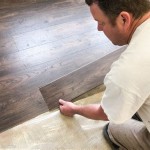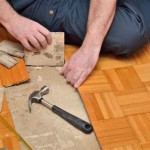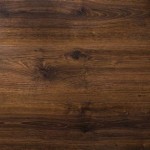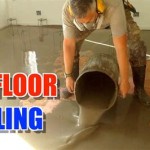Can You Whitewash Oak Floors In Singapore: A Comprehensive Guide
Whitewashing oak floors is a popular technique for achieving a light, airy, and modern aesthetic in interior design. This process involves applying a diluted white or off-white finish to the wood, allowing the natural grain to still show through. The result is a floor that appears brighter, more spacious, and aesthetically pleasing. However, the suitability and process of whitewashing oak floors in Singapore differ from those in regions with different climates and wood sourcing practices. This article examines the feasibility, challenges, and recommended methods for whitewashing oak floors in Singapore, considering the environmental factors and the specific characteristics of oak commonly available in the local market.
The desire for lighter-toned flooring has surged in popularity, aligning with minimalist and Scandinavian-inspired design trends. Whitewashing offers an alternative to replacing existing dark-stained or naturally darker wood floors, providing a cost-effective method of achieving a desired look. In Singapore, where space is often a premium, the brightening effect of whitewashed floors can make a significant impact on the perceived size and ambiance of a room. Before embarking on this project, thorough research and understanding of the specific implications for oak flooring in Singapore are crucial.
Considerations Specific to Singapore's Climate
Singapore's tropical climate presents unique challenges for wood flooring, including oak. High humidity levels and consistent temperature fluctuations can significantly affect the wood's stability and durability. Oak, while a relatively durable hardwood, is still susceptible to moisture absorption and expansion. When whitewashing, the application of a water-based finish can exacerbate these issues, potentially leading to warping, cupping, or cracking if not properly addressed. It is imperative to select the appropriate type of whitewash finish and sealing methods designed to withstand Singapore's environmental conditions.
Proper acclimatization of the oak flooring before any finishing work is paramount. This involves allowing the wood to adjust to the local humidity levels for a sufficient period, typically several days to weeks, depending on the initial moisture content of the wood. Failure to acclimatize can result in significant dimensional changes after the whitewashing process, leading to unsightly gaps and structural problems. Furthermore, ensuring adequate ventilation during and after the application of the finish is crucial for proper drying and curing, minimizing the risk of moisture-related damage.
The selection of appropriate sealants and topcoats is equally important. These products act as a protective barrier against moisture penetration and everyday wear and tear. Opting for sealants with UV inhibitors can also help prevent yellowing or discoloration of the whitewashed finish over time, preserving the desired aesthetic. Regular maintenance, including proper cleaning and the periodic application of a refresher coat of sealant, is essential for prolonging the lifespan and appearance of whitewashed oak floors in Singapore’s humid environment.
Oak Types and Their Suitability for Whitewashing
Oak comes in various species, each with distinct characteristics that affect its suitability for whitewashing. The two primary types are red oak and white oak. Red oak, characterized by its pinkish undertones and more open grain pattern, tends to absorb more stain, which can influence the final appearance of the whitewash. White oak, with its tighter grain and greenish-gray undertones, is generally considered more water-resistant and less prone to excessive stain absorption, potentially yielding a more predictable and even whitewashed effect.
In Singapore, the availability of specific oak species can vary depending on sourcing practices and import regulations. It is essential to identify the exact type of oak flooring before proceeding with the whitewashing process. This can be determined by examining the grain pattern, color, and density of the wood. Consulting with a flooring professional or a wood expert can provide valuable insights and ensure that the appropriate whitewashing techniques and products are selected for the specific oak type.
The existing finish on the oak floor also plays a significant role in the outcome of the whitewashing process. If the floor is already coated with a varnish or polyurethane finish, thorough sanding is typically required to remove the existing layer and create a suitable surface for the new whitewash finish to adhere properly. Insufficient preparation can lead to uneven absorption, peeling, or a generally unsatisfactory result. Consider the existing floor's condition and the type of oak to create a detailed plan for the optimal whitewashing results.
The Whitewashing Process: Steps and Considerations
The process of whitewashing oak floors involves several crucial steps, each requiring careful attention to detail. The initial phase involves thorough cleaning and preparation of the floor surface. This includes removing any dust, debris, or existing coatings. Sanding is typically necessary to create a smooth and even surface, allowing the whitewash finish to penetrate the wood pores effectively. The grit of the sandpaper used will depend on the existing finish and the desired level of texture.
Once the floor is properly prepared, the whitewash finish can be applied. This typically involves mixing a white or off-white paint with water or a specialized whitewashing product. The ratio of paint to water will determine the opacity and intensity of the whitewashed effect. It is recommended to test the mixture on a small, inconspicuous area of the floor to ensure that the desired color and transparency are achieved before applying it to the entire surface. Multiple thin coats are generally preferable to a single thick coat, as this allows for better control over the final appearance and reduces the risk of uneven application.
After the whitewash finish has been applied and allowed to dry completely, a protective sealant or topcoat is essential. The sealant should be specifically designed for use on wood floors and compatible with the whitewash finish. It should provide adequate protection against moisture, scratches, and everyday wear and tear. The application method and drying time for the sealant should be carefully followed according to the manufacturer's instructions. Regular maintenance, including cleaning with appropriate wood floor cleaners and periodic reapplication of the sealant, will help maintain the beauty and durability of the whitewashed oak floors for years to come.
Addressing common issues is an important part of the process. One common problem is uneven absorption of the whitewash, resulting in a blotchy or inconsistent appearance. This can be caused by variations in the wood grain density or incomplete sanding. To remedy this, re-sanding the affected areas and reapplying the whitewash in thin, even coats may be necessary. Another issue is yellowing of the whitewash finish over time, especially in areas exposed to direct sunlight. Using sealants with UV inhibitors and implementing window coverings can help prevent this discoloration.
Proper ventilation is critical throughout the entire process. The fumes from the whitewash finish and sealant can be harmful, and adequate airflow is essential for both the safety of the applicator and the proper curing of the finish. Opening windows and using fans can help to circulate air and reduce the concentration of fumes. It is also recommended to wear appropriate protective gear, such as a respirator or mask, gloves, and eye protection, to minimize exposure to harmful chemicals. Safety precautions must be considered when undertaking this project.
The timeline for whitewashing oak floors can vary depending on the size of the area, the condition of the existing floor, and the drying times of the chosen products. It is generally recommended to allocate several days to a week for the entire process, including preparation, application, drying, and sealing. Rushing through any of these steps can compromise the final result. Proper planning and patience are key to achieving a beautiful and durable whitewashed oak floor in Singapore.

Nostalgiecat How To Whitewash Wooden Flooring

Whitewash Elegant Oak 60064 The Floor Gallery

Whitewashing Floorboards Issues Houzz

Red Oak Whitewash Stain Contemporary Living Room Detroit By Michigan Hardwood Floors Services Llc Houzz Ie

Ultimate Guide To Whitewashing Your Furniture Floorboards

Whitewash Straight Plank Edelholz Floor Of A Lifetime
Sg Er 5mm Vinyl Flooring Lvt Better Than Spc System Luxury Floor Tiles German Uniclic Locking Technology Ee Singapore

Oak White Washed Floor Images Browse 4 201 Stock Photos Vectors And Adobe

Diy Project Whitewash Tabletop Habitat By Resene

Whitewash Straight Plank Edelholz Floor Of A Lifetime
See Also
